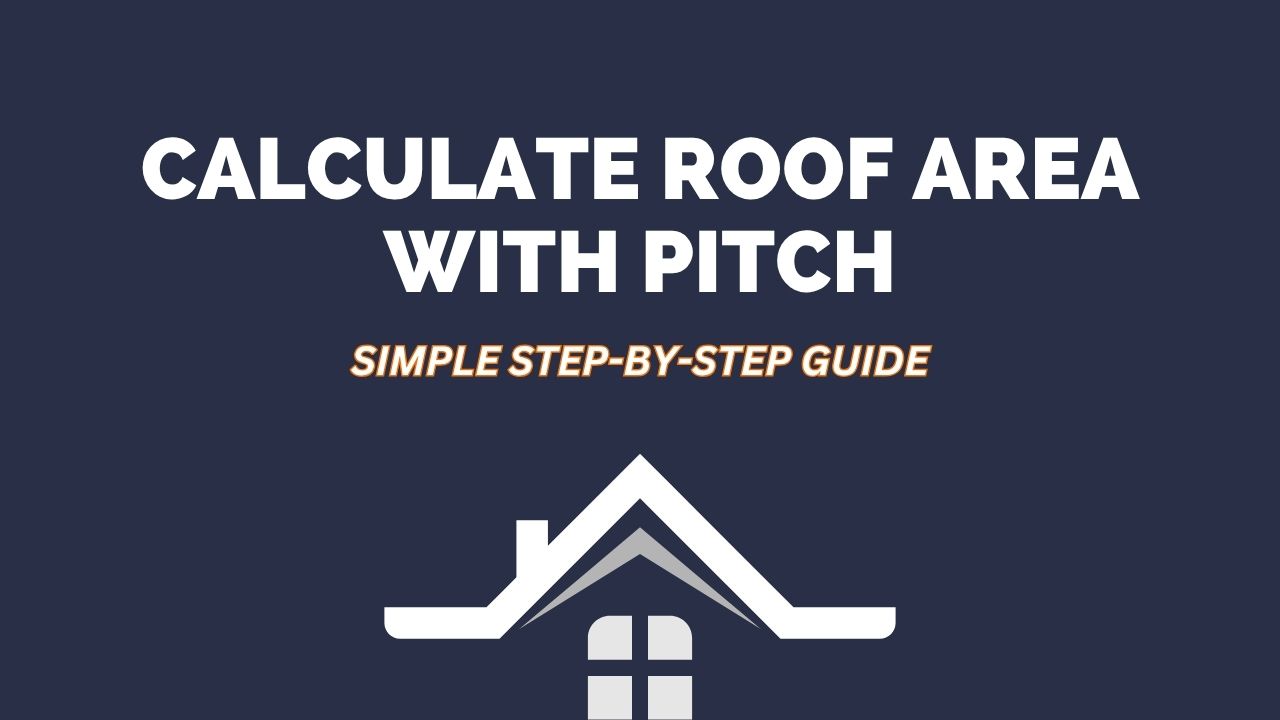How to Calculate Roof Area with Pitch


If you’re planning to replace your roof or estimate materials, one thing you need to know is the total roof area.
But here’s the tricky part — if your roof is sloped, you can’t just measure it flat. You have to adjust for the roof pitch.
Don’t worry — it’s not as complicated as it sounds.
In this guide, I’ll explain how to calculate roof area with pitch in a simple way anyone can understand.
What Does “Roof Pitch” Mean?
Before we calculate anything, let’s make sure we understand what pitch actually means.
Roof pitch is just the steepness of your roof — how much it rises compared to how far it runs horizontally.
It’s usually written like this:
4/12 pitch or 6/12 pitch
That means the roof rises 4 inches (or 6 inches) for every 12 inches (1 foot) of horizontal distance.
Step 1: Measure the Base Area of Your Roof
The easiest way to start is by finding the footprint of your roof — basically the area of your house covered by the roof (not counting pitch yet).
Here’s how:
- Measure the length and width of your house.
- Multiply them to get the base area.
Example:
If your house is 40 feet long and 30 feet wide,
then:
40 × 30 = 1,200 square feet
That’s your flat (ground-level) roof area.
Step 2: Find Your Roof Pitch
If you don’t already know your roof pitch, you can measure it easily.
Here’s how to do it safely:
- Place a 12-inch ruler horizontally on your roof (use the level side).
- Use a tape measure to see how many inches the roof rises vertically over that 12-inch run.
If it rises 6 inches, your roof pitch is 6/12.
If it rises 4 inches, your roof pitch is 4/12, and so on.
Step 3: Find the Pitch Factor
The pitch factor is what helps you adjust your flat area to get the real surface area of your sloped roof.
Here’s a simple chart of common roof pitch factors:
| Roof Pitch | Pitch Factor |
|---|---|
| 3/12 | 1.031 |
| 4/12 | 1.054 |
| 5/12 | 1.083 |
| 6/12 | 1.118 |
| 7/12 | 1.158 |
| 8/12 | 1.202 |
| 9/12 | 1.250 |
| 10/12 | 1.305 |
| 11/12 | 1.356 |
| 12/12 | 1.414 |
These numbers represent how much extra surface area you get because of the roof slope.
The steeper your roof, the higher the factor.
Step 4: Multiply Base Area × Pitch Factor
Now, to get your true roof area, multiply your base area by the pitch factor.
Example:
Let’s say your house base area is 1,200 sq. ft., and your roof pitch is 6/12.
Pitch factor for 6/12 = 1.118
So:
1,200 × 1.118 = 1,341.6 sq. ft.
Your actual roof area is about 1,342 square feet.
That’s the number you’ll use to estimate roofing materials, shingles, or panels.
Step 5: Adjust for Roof Design (if needed)
If your roof is not a simple gable shape, you may need to adjust slightly.
- For hip roofs: Multiply your final area by about 1.1 to account for the extra surface.
- For complex roofs (with dormers, valleys, or multiple sections): Measure or estimate each section separately, then add them up.
Taking a few extra minutes here will make your estimate much more accurate.
Step 6: Add a Waste Factor
When ordering materials, always add extra for waste — shingles cut for edges, overlaps, or mistakes.
A good rule of thumb:
- Add 10% for simple roofs.
- Add 15%–20% for complex roofs.
So, if your total roof area is 1,342 sq. ft., add 10%:
1,342 × 1.10 = 1,476 sq. ft.
That’s how much material you should buy to be safe.
Quick Formula Recap
Here’s the simple formula for calculating roof area with pitch:
Roof Area = (Length × Width) × Pitch Factor
Then add 10–20% for waste.
That’s it. You don’t need advanced math or special tools.
Bonus Tip: Online Roof Area Calculators
If you don’t want to do the math manually, you can use an online roof area calculator.
Just enter your house dimensions and roof pitch — it will do all the calculations for you in seconds.
But it’s still good to understand the math behind it, especially if you want to double-check your contractor’s numbers.
Final Thoughts
Calculating your roof area with pitch might sound complicated at first, but it’s really just a few easy steps:
- Measure your house base area
- Find your roof pitch
- Multiply by the pitch factor
- Add a little extra for waste
That’s all it takes to get a reliable roof area estimate.
Knowing this helps you budget accurately, order the right amount of material, and avoid costly mistakes.
So next time someone asks “how do you calculate roof area with pitch?” — you’ll be the one explaining it confidently.
In short:
A flat roof area × pitch factor = the real sloped roof area.
Simple, useful, and accurate.